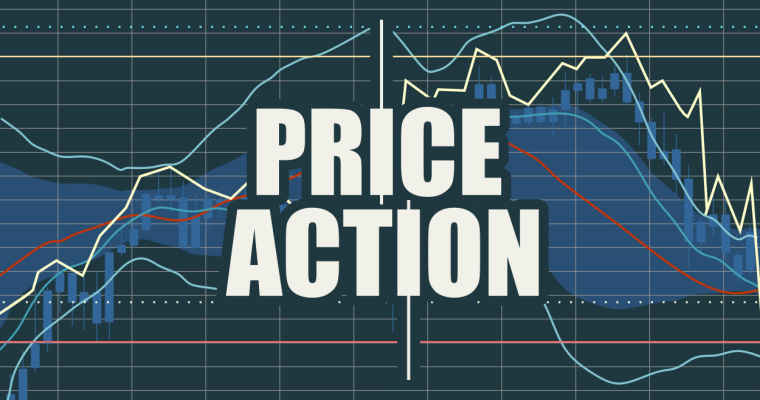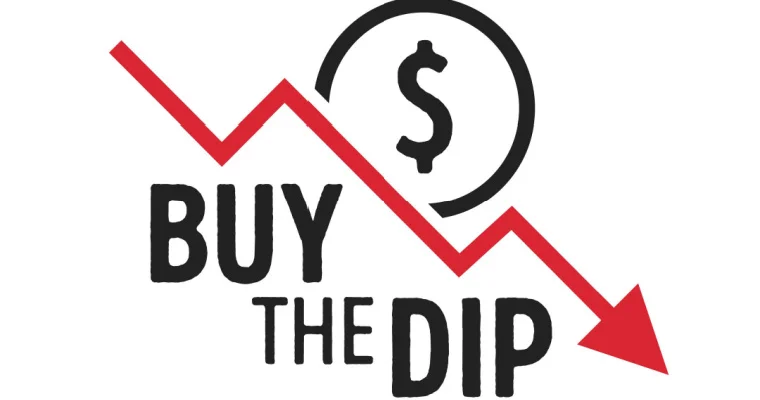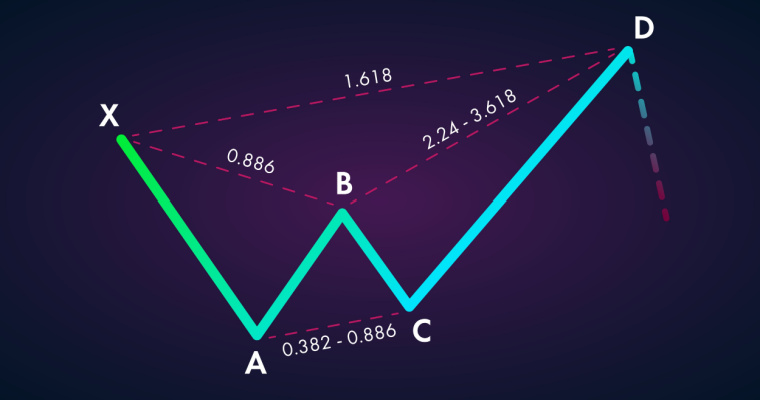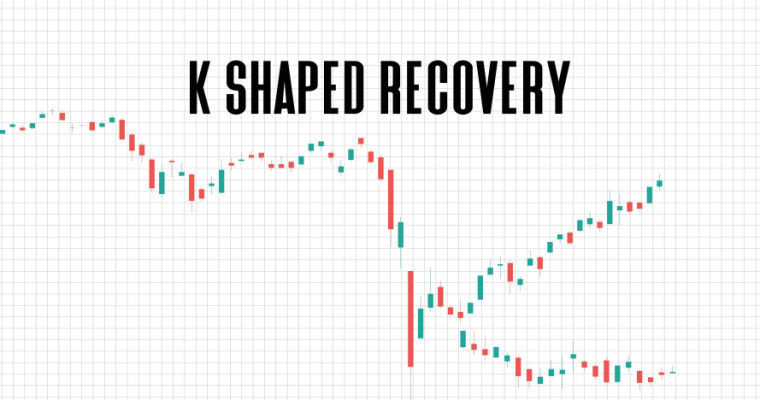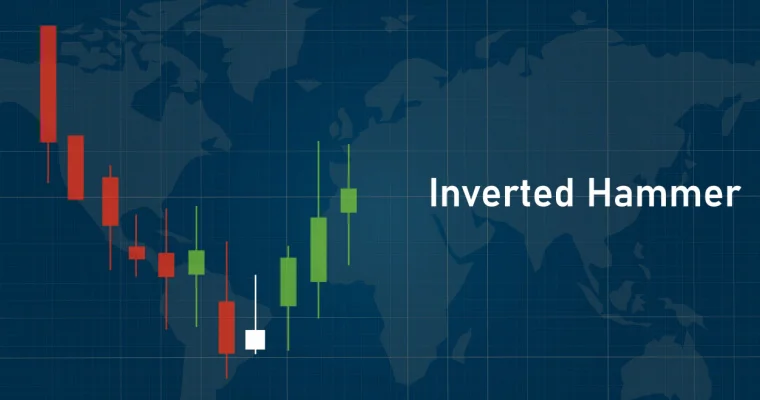What is VWAP Indicator and How to Use it for Trading
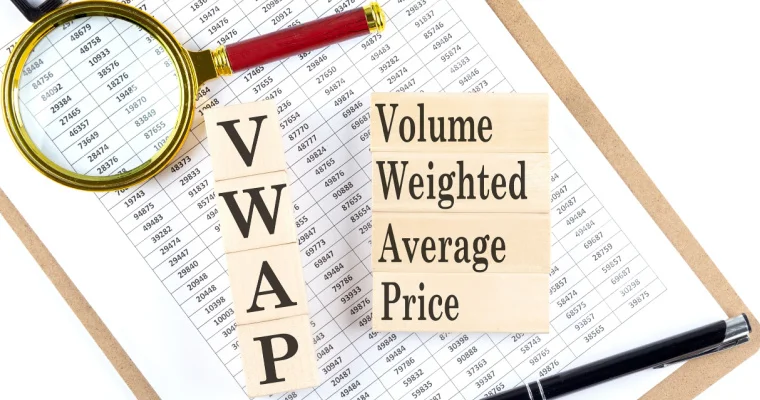
The VWAP indicator shows the volume-weighted average market price of a particular stock. You can use the VWAP settings for day trading, as investors calculate the metric daily to understand the price fluctuations.
Investors use the indicator to decide when to enter or exit the market. It eliminates the disturbances caused in the market due to price fluctuations and helps evaluate a fair price. As the name indicates, the VWAP indicator considers both price and stock volume while determining its fair price.
How does a VWAP Indicator Work?
The working of the VWAP will help you in crafting the VWAP indicator strategy. The indicator gives the relative value of all the trades placed for a stock. You can then use the relative value to compare it with a benchmark price and decide if you should exit your position or buy more of that stock. The VWAP line resets when the day begins to ensure that each day’s value for the VWAP indicator remains distinct.
You can calculate the average or the typical price and then multiply it by the volume of that particular time frame to arrive at the subtotal or the PV( Price*Volume). You can then divide the cumulative PV of the period by the cumulative volume of the period.
You can repeat the activity for the time frame you want the values for. Once these values are combined, it gives a line on the price chart called the VWAP indicator. The free VWAP indicator is calculated automatically by most trading tools.
Importance of VWAP (Volume Weighted Average Price)
1. It Tells the Investors About the Market
A VWAP indicator tells the investors and the traders if the market is bearish or bullish. If the stock price falls below the VWAP, the market is considered bearish, and if it goes above the VWAP, it indicates the market’s bullishness.
2. Indicates When to Buy or Sell
It indicates when you should buy or sell a particular stock. As the metric is an integral part of the technical analysis, the investors look at the free VWAP indicator before buying or selling a stock. The VWAP line allows the investors to buy the stocks at a lower price; hence, they can register more profits when selling them.
3. A Better Metric
The VWAP is considered better than other indicators like the VWMA indicator. The indicator gives concrete information on when to enter or exit the market and is not based on general stock trends. Hence, the investors place educated and well-informed trades in the stock market.
How to Calculate VWAP
Take a stock chart for a specific time frame. Here, we are taking a 5-minute chart for the calculation of the VWAP. The steps remain the same irrespective of the time frame you consider for the calculation. You can use the following steps to calculate the free VWAP indicator:
- Calculate the stock’s average price by considering the prices of the first 5-minutes of the trading day. You can do this by adding the stock’s high, low, and close prices during the time frame and then dividing it by 3.
- Once you have the average, calculate the PV value of the stock by multiplying the average with the volume for that particular time frame.
- Now, divide the PV value by the volume of the stocks for the entire time frame to get the value for VWAP.
- You can keep calculating the VWAP for the entire day by adding the PV values across periods. You can use a spreadsheet to calculate the cumulative PV and volumes. You can then divide them to get the VWAP at every time.
The formula for calculating the VWAP indicator is as follows:
VWAP: ∑ Price * Volume/ ∑Volume
Signals in Volume Weighted Average Price
You must know the different kinds of signals given out by the VWAP indicator settings. These signals can confuse the trader if they don’t know their correct interpretation. A VWAP indicator gives out two critical signals:
1. VWAP Breakout
If the price tends to go above the VWAP line, the market appears bullish, and the trend’s strength is quite good. As the price surpasses its average value, a long signal is generated. The same happens in the case of a solid bearish trend where the price falls drastically. When the price line crosses the VWAP line is a good time to buy the stock.
2. Support and Resistance
The VWAP line is also used as the support or resistance. If the price approaches the VWAP line from below and keeps moving with the same rhythm, the VWAP is considered resistance. However, if the same thing happens in the opposite direction, the VWAP line acts as a support and results in a bullish bounce.
Benefits of Using VWAP
As an investor, you must know the benefits of using the VWAP indicator and why it is widely used during the technical analysis of the stock.
- Ample price fluctuations in a day can confuse the investor. The VWAP indicator clears all the noise around the same and gives a value at which the stock is being traded.
- It tells the traders when to enter and exit a stock position during intraday trading.
- The indicator gives the idea of the momentum at a specific timeframe to investors and traders.
- Retailers frequently use the metric as it is one of the few stock market metrics that can help people determine price trends within a day.
Difference Between VWAP and Moving VWAP
| VWAP | Moving VWAP |
| VWAP is an intraday technical analysis indicator that resets at the start of each trading session. | The moving VWAP, also known as the VWMA indicator, places more emphasis on the price of the stocks than the trade volume. |
| The VWAP is an intra-day indicator that considers both the price of the stock and its volume for a given time frame it is used for intra-day trading by short-term traders. | Moving VWAP can be used for any length of the time frame and hence is more suited for long-term investors |
Final Word
The VWAP indicator is a great tool used during the technical analysis of stocks. Several traders use it in isolation, while a few use it along with other indicators in the market to ascertain when to enter or exit the market. You can use the indicator to understand the market and the trends and frame a relevant VWAP indicator strategy.
Trading needs commitment! If that’s something you can’t do then investing is a better option. Start your investing journey with Navi Mutual Funds. Explore Navi Mutual Fund schemes and invest in the fund of your choice. What you get – low-cost funds across geographies, investments starting as low as Rs.10, diverse sectors, and more.
FAQs
Ans: An anchored VWAP indicator connects the VWAP indicator to a specific price bar on the stock charts chosen by the investor. It is used to identify the support and resistance levels on a stock chart.
Ans: The VWAP standard deviation bands are a set of lines plotted along with the VWAP chart line, showing the positive and negative standard deviations so that the trader can adjust accordingly.
Ans: The VWMA indicator shows the volume-weighted moving average of a particular stock. The indicator puts weight on the volume to understand the price movements and is used to discover emerging trends in the market.
Ans: Investors who make intra-day trades or are into short-term investing can use the VWAP indicator to decide when to invest or place a trade.
Ans: The VWAP cross shows a point where the stock price goes beyond the VWAP line on a stock chart. It is a crucial trading indicator.
Want to put your savings into action and kick-start your investment journey 💸 But don’t have time to do research? Invest now with Navi Nifty 50 Index Fund, sit back, and earn from the top 50 companies.
Disclaimer: Mutual Fund investments are subject to market risks, read all scheme-related documents carefully.
This article has been prepared on the basis of internal data, publicly available information and other sources believed to be reliable. The information contained in this article is for general purposes only and not a complete disclosure of every material fact. It should not be construed as investment advice to any party. The article does not warrant the completeness or accuracy of the information and disclaims all liabilities, losses and damages arising out of the use of this information. Readers shall be fully liable/responsible for any decision taken on the basis of this article.

Customer’s Feedback
No comments found.Illiquid Stocks Guide: Definition, Examples, and its Working
Illiquid stocks are part of a long-term investment strategy that is appropriate for investors who a... Read More »What is Shooting Star Candlestick Pattern in Trading?
The shooting star candlestick pattern is considered to be a bearish reversal candlestick ... Read More »What is Price Action Trading: Its Strategy, Stop Loss and Profit Targets
Price action trading is a methodology in which the trader solely relies on analysing a security’s... Read More »What is Buy the Dip Strategy in Trading – Working and Example
‘Buy the dip’ is one of the most common phrases in the stock market. It is sort of a go-t... Read More »What is the Black Scholes Model – Formula, Calculation and Assumptions
Among the important concepts in modern financial theory, the Black Scholes model, developed in 1973... Read More »What is Iron Condor and What are its Strategies?
Iron Condor is an options trading strategy that involves four options with the same expiration date... Read More »What is Harmonic Pattern and How Does it Help in Trading?
Harmonic patterns are one of the most efficient and effective trading patterns. Although they are m... Read More »What is a Contract Note and Why is it Important?
Contract note is a legal document containing the details of every stockbroker's trade on a stock ex... Read More »What is K-shaped Recovery: Indication, Example and
Economies go through multiple phases in business cycles. One such phase is a recession which is mar... Read More »Guide to Book Building – Its Types, Benefits and Process
Initial public offerings (IPOs) are priced as specified by their underwriters. The process by which... Read More »Support and Resistance in Trading: Working, Strategies, Uses and Example
Support and resistance are two of the most significant and practical concepts in technical analysis... Read More »What is the Inverted Hammer Pattern and How to Identify It?
The inverted hammer is one of the most popular candlestick patterns and is considered essential for... Read More »Top 10 Chit Fund Schemes in India in 2023
Chit funds are one of the most popular return-generating saving schemes in India. It is a financial... Read More »10 Best Gold ETFs in India to Invest in April 2023
Gold ETFs or Gold Exchange Traded Funds are passively managed funds that track the price of physica... Read More »10 Best Demat Accounts in India for Beginners in 2023
Creation of Demat accounts revolutionised the way trades were conducted at the stock exchanges. It... Read More »20 Best Index Funds to Invest in India in April 2023
What is an Index Fund? An index fund is a type of mutual fund or exchange-traded fund (ETF) that... Read More »Best Arbitrage Mutual Funds to Invest in India in April 2023
Arbitrage funds are hybrid mutual fund schemes that aim to make low-risk profits by buying and sell... Read More »10 Best SIP Plans in India to Invest in April 2023
What is SIP? SIP or Systematic Investment Plan is a method of investing a fixed amount in ... Read More »10 Best Corporate Bond Funds in India to Invest in April 2023
Corporate bond funds are debt funds that invest at least 80% of the investment corpus in companies ... Read More »10 Best Bank for Savings Account in India [Highest Interest Rate 2023]
Savings account is a type of financial instrument offered by several banks. It lets you safely depo... Read More »












